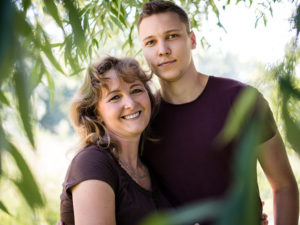
Community Action Plan
Building Hope Together
We asked Kauai’s influencers in business, government, public and private sectors “what is Kaua`i’s most critical issue? What should we be focusing on?”
Caring for Kaua`i’s youth and giving them hope is something everyone agreed on.
We believe this agreement is powerful and it can bring about the change that we’ve been seeking, breaking down barriers and creating solutions so that our youth will have hope for the future and will turn away from despair.
Our focus became the antithesis of suicide. It’s Resiliency. It is strengthening our young people’s ability to bounce back from hard times because they believe in themselves and they know their community believes in them too.
Kauai’s own longitudinal study set our foundation. It shows us that even when you are born into a bad situation, there are small, simple things that can change the trajectory of your life for the positive. It’s a set of small choices by an individual and by the surrounding community that makes all the difference.
As a community, we are saying “Kaua`i’s Kids Are Your Kids.” We take responsibility as adults to look out for our teens, pre-teens and keiki. We see our youth and believe in them. We are here for them.
To create a community action plan that is meaningful and has the best chance of success, we first listened to our young people around the island. Next, we spoke to mental health professionals, conducted extensive research, reviewed best practices, talked to principals and community leaders.
The community action plan is our blueprint to create a supportive environment for young people. In includes what teens are asking for most. The plan
-
Strengthen youth protective factors across Kaua`i. Caring adults and neighborhoods.
-
Insure every young person is taught life skills and/or social emotional skills to build individual resilience.
-
Insure that young people have access to after school activities, without barriers such as fees or transportation.
-
Create safe places for middle and high school kids to gather outside of school hours on a regular basis, such as teen centers.
Please look at the plan below and contact us if you would like to help. It will take all of us to say “We got this, Kaua`i!” E-mail info-[email protected]
Action Item (What and Why)
How Can the Community Help?
1. Strengthen Youth Protective Factors on Kaua`i: something everyone can do to help.
Protective factors are important assets in a child’s development. External factors focus on relationships and opportunities that a child needs at home, at school and in the community. Internal factors include each child’s values, self-control, sense of purpose and connection to the future.
Youth who have multiple protective factors in their lives are generally healthier, better equipped to handle stress, do better in school, have a better financial future and a more robust quality of life. They are less likely to use drugs and alcohol, take part in risky behaviors, and harm themselves or others.
For more information on protective factors, click here.
The 2019 Protective Factors Information Campaign will be a media and grass roots campaign to inform the public about the importance of building youth protective factors.
Every person on Kaua`i can help. Campaign will invite parents, youth, community groups, schools, employers, and general public to understand how they can take simple steps to create more protective factors for our youth in their homes, neighborhoods, schools and community organizations.
For example:
– Make time for dinner together with your family.
-Create caring neighborhoods that make youth feel welcome.
-Encourage and invite youth to volunteer and connect with community.
-Reduce young people’s social media and screen time by offering other activities Etc.
2. Insure that every young person in middle and high school is taught life skills or resilience training (and/or social emotional learning) in school
With the rapid pace of our current lifestyles, and the advent of social media, even life’s daily stresses can at times seem overwhelming. Being resilient is the ability to bounce back when faced with a difficult or traumatic situation. Resilience enables young people to maintain balance during stressful times, and to create their own personal path to success.
Resilience or life skills training prepares young people with specific skills and strategies to navigate peer pressure, cope with negative situations, say no to using drugs and alcohol, and enjoy better relationships with family and peers.
The HI DOE is working to provide specific curriculum, selected by each school, to build resiliency in middle and high school students.
Curriculum might include successful evidence-based programs such as Sources of Strength https://sourcesofstrength.org/ or the Botvin Life Skills Training. www.lifeskillstraining.com.
Reduce social media use, and educate youth on how to handle the emotional side of social media.
Provide professional development for middle and high school teachers to better understand and deliver life skills/Social Emotional Learning programs to their students.
3. Insure that young people have access to after school activities, without barriers such as fees or transportation. Start with middle school students, where the need is greatest.
Many parents are working, and the time after school is when young people are more likely to get into trouble. After school programs have been shown to reduce risky behaviors, promote physical health, boost academic performance, and provide a safe, structured environment for young people.
After school programs are a way for young people to connect and feel a sense of belonging. They are a place to learn and practice social skills, life skills, and an opportunity to learn new talents and abilities in STEM, the creative arts and entrepreneurship.
Youth organizations, community organizations, faith-based organizations, county neighborhood centers and the DOE can provide exciting after school programs that engage students in the things that they love to do and teach them important skills for future success. Programs could include creating music or performing arts; maker-spaces; STEM clubs; video programming; or sports activities such as martial arts.
In addition, these programs should incorporate resilience and life skills training, and possibly provide mental health screening or access to trained counselors wherever possible.
Determine what the barriers are for young people to attend after school programs, such as transportation or the cost of attending and work to eliminate them.
Communities can assess what is already working and raise money or volunteer time to expand those programs. Organizations would also ask local students what they would like to do and rally to provide those activities.
4. Create Multiple Safe Places for Young People to Gather, located in communities around Kaua`i.
There are not enough safe places for our young people to hang out with their friends on evenings and weekends. Unsupervised gathering places present the unwelcome opportunity for illegal drugs, underage drinking and inappropriate behavior, bullying, violence and peer pressure.
Experience in other rural areas shows us that providing a friendly gathering place, with caring adult staff who are trained in counseling and suicide prevention, reduces risky behaviors and the number of youth who want to harm themselves. Teen centers can use existing facilities, such as libraries, neighborhood centers or faith-based facilities, or create new places if needed.
Provide local opportunities for teens to gather in safe places, with trained adults that offer interesting things to do. Provide transportation as needed.
Youth groups, faith-based organizations, county government, and DOE can provide a safe and fun place to gather on a regular basis, with supervised activities.
Raise money to support centers.





